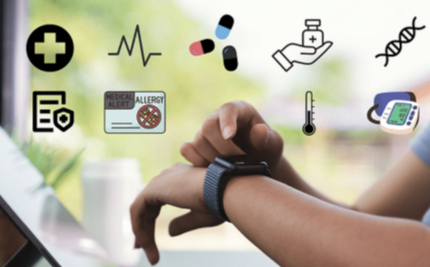The rise of wearable technology marks a significant shift in how individuals monitor their health and engage with learning. Devices such as fitness trackers and smartwatches provide real-time insights that encourage healthier lifestyles. Additionally, these technologies are making waves in educational settings, enhancing interactive experiences. As innovations like smart textiles and augmented reality emerge, the implications for society could be profound. What new possibilities lie ahead in this evolving landscape?
The Evolution of Wearable Technology
As technology has advanced, the evolution of wearable devices has transformed from rudimentary concepts into sophisticated tools that seamlessly integrate into daily life.
The introduction of smart textiles marked a significant milestone, allowing fabrics to incorporate sensors and connectivity, thus enhancing user experience. These innovative materials can monitor environmental conditions or user interactions, broadening the scope of wearables beyond traditional electronics.
Additionally, the integration of augmented reality (AR) has provided users with immersive experiences, bridging the gap between the digital and physical worlds. By overlaying digital information onto real environments, AR-enabled wearables empower individuals to interact with their surroundings in novel ways.
This convergence of smart textiles and augmented reality signifies a future where wearables not only serve practical functions but also enrich personal freedom and creativity.
Read more: Why Cybersecurity Should Be a Top Priority for Businesses
Health Monitoring and Fitness Tracking
The integration of wearable technology into daily life has revolutionized health monitoring and fitness tracking, creating a paradigm shift in personal wellness management. Devices such as smartwatches and fitness bands continuously collect health metrics, including heart rate, sleep patterns, and activity levels, empowering individuals to take charge of their health.
By analyzing these metrics, users can set and achieve personalized fitness goals with unprecedented accuracy. This data-driven approach not only fosters motivation but also enhances accountability, allowing users to make informed decisions about their lifestyle.
Furthermore, as technology advances, the potential for real-time health insights continues to expand, promising a future where individuals can seamlessly integrate wellness into their daily routines, ultimately promoting a more liberated and health-conscious society.
Wearable Tech in Education and Learning
Although wearable technology is often associated with health and fitness, its applications in education and learning are increasingly gaining attention.
In smart classrooms, devices such as augmented reality glasses and smartwatches facilitate interactive learning by providing real-time feedback and enhancing student engagement. Educators can leverage wearables to tailor lessons, monitor student progress, and create immersive learning experiences.
For instance, virtual simulations accessed through smart devices allow students to explore complex concepts in a hands-on manner. Furthermore, wearables promote collaboration among learners, encouraging them to share insights and work together on projects.
As educational institutions embrace this technology, the potential for personalized and dynamic learning environments expands, empowering students to take control of their educational journeys while fostering creativity and critical thinking.
The Future of Wearable Technology and Its Impact
While advancements in wearable technology continue to evolve rapidly, their future impact on various sectors promises to be profound.
The integration of smart clothing will revolutionize personal health monitoring, allowing individuals to track vital signs seamlessly throughout their daily activities. This shift not only enhances individual well-being but also empowers users with data-driven insights into their health.
Furthermore, augmented reality (AR) is set to transform how people interact with their environments, merging digital information with the physical world. As AR applications expand into industries like retail and fitness, they will enrich user experiences, offering innovative ways to engage with products and services.
Consequently, wearable technology stands to redefine personal autonomy, fostering a more interconnected and informed society.
Conclusion
In conclusion, wearable technology serves as a compass guiding individuals through the intricate landscape of health and personal development. By seamlessly integrating into daily life, these devices not only enhance fitness and well-being but also enrich educational experiences, paving the way for a more informed society. As advancements unfold, the potential for wearable tech to redefine human interaction with information and health continues to blossom, promising a future where knowledge and wellness intertwine harmoniously.
